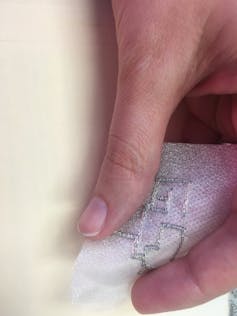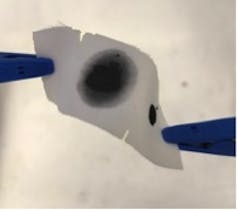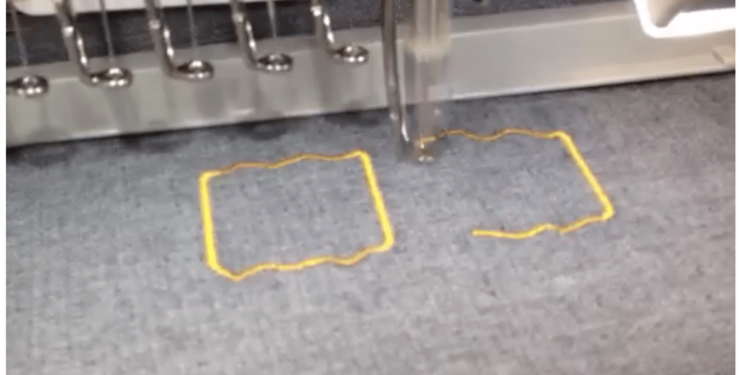source: The Conversation article
Asimina Kiourti, The Ohio State University
Archaeology reveals that humans started wearing clothes some 170,000 years ago, very close to the second-to-last ice age. Even now, though, most modern humans wear clothes that are only barely different from those earliest garments. But that’s about to change as flexible electronics are increasingly woven into what are being called “smart fabrics.”
Many of these are already available for purchase, such as leggings that provide gentle vibrations for easier yoga, T-shirts that track player performance and sports bras that monitor heart rate. Smart fabrics have potentially promising uses in health care (measuring patients’ heart rate and blood pressure), defense (monitoring soldiers’ health and activity levels), cars (adjusting seat temperatures to make passengers more comfortable) and even smart cities (letting signs communicate with passersby).
Ideally, the electronic components of these garments – sensors, antennas to transmit data and batteries to supply power – will be small, flexible and largely unnoticed by their wearers. That’s true today for sensors, many of which are even machine-washable. But most antennas and batteries are rigid and not waterproof, so they need to be detached from the clothing before washing it.
My work at the ElectroScience Laboratory of the Ohio State University aims to make antennas and power sources that are equally flexible and washable. Specifically, we’re embroidering electronics directly into fabrics using conductive threads, which we call “e-threads.”
Antenna embroidery

ElectroScience Lab, CC BY-ND
The e-threads we’re working with are bundles of twisted polymer filaments to provide strength, each with a metal-based coating to conduct electricity. The polymer core of each filament is typically made out of Kevlar or Zylon, while the surrounding coating is silver. Tens or even hundreds of these filaments are then twisted together to form a single e-thread that’s usually less than half a millimeter across.
These e-threads can be easily used with common commercial embroidery equipment – the same computer-connected stitching machines that people use every day to put their names on sports jackets and sweatshirts. The embroidered antennas are lightweight and just as good as their rigid copper counterparts, and can be as intricate as state-of-the-art printed circuit boards.
Our e-thread antennas can even be combined with regular threads in more complex designs, like integrating antennas into corporate logos or other designs. We’ve been able to embroider antennas on fabrics as thin as organza and as thick as Kevlar. Once embroidered, the wires can be connected to sensors and batteries by traditional soldering or flexible interconnections that plug components together.
So far, we’ve been able to create smart hats that read deep brain signals for patients with Parkinson’s or epilepsy. We have embroidered T-shirts with antennas that extend the range of Wi-Fi signals to the wearer’s mobile phone. We also made mats and bedsheets that monitor infants’ height to screen for a range of early childhood medical conditions. And we’ve made foldable antennas that measure how much a surface the fabric is on has bent or lifted.
Moving beyond the antenna
My lab is also working with other Ohio State researchers, including chemist Anne Co and physician Chandan Sen, to make flexible fabric-based miniature power generators.

ElectroScience Lab, CC BY-ND
We use a process much like inkjet printing to place alternating regions of silver and zinc dots on the fabric. When those metals come into contact with sweat, saline or even fluid discharges from wounds, silver acts as the positive electrode and zinc serves as the negative electrode – and electricity flows between them.
We have generated small amounts of electricity just by getting the fabric damp – without the need for any additional circuits or components. It’s a fully flexible, washable power source that can connect with other wearable electronics, eliminating the need for conventional batteries.
![]() Both together and individually, these flexible, wearable electronics will transform clothing into connected, sensing, communicating devices that mesh well with the fabric of the interconnected 21st century.
Both together and individually, these flexible, wearable electronics will transform clothing into connected, sensing, communicating devices that mesh well with the fabric of the interconnected 21st century.
Asimina Kiourti, Assistant Professor of Electrical and Computer Engineering, The Ohio State University
This article was originally published on The Conversation. Read the original article.
Featured Image: Embroidery machine creating FSS structure, source: “Embroidery and Related Manufacturing Techniques for Wearable Antennas: Challenges and Opportunities”, read the full article here






























